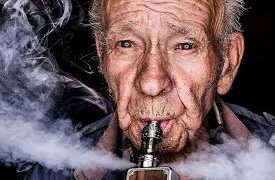
There’s a strange anti-vaping hysteria hitting governments. Unfortunately, it’s nothing new to Southern California. The Los Angeles City Council voted to ban vaping in public places years before state legislators opted for a statewide clampdown.
In May, the Laguna Beach City Council included vaping in its all-out ban of tobacco use in public places. The Riverside cities of Norco and Hemet banned e-cigarettes from parks in 2016 and 2015, respectively. If vapers hadn’t quite gotten the message that they are to be ostracized just like smokers have been, last year Pasadena played host to a bizarre anti-vaping campaign that portrayed e-cigarette users as sheep-human hybrids and explicitly called vapers “stupid sheep.”
The itch to treat vaping like smoking afflicting so many public health activists and government officials may be well-intentioned, but it is also misguided and harmful to the very goal of reducing smoking which these campaigners claim to champion.
While e-cigarettes are not entirely safe, they are scientifically recognized to pose a fraction — just 5 percent — of the risks that are associated with regular cigarettes, according to the United Kingdom’s Royal College of Physicians.
Vapor products offer a way to consume nicotine without inhaling the lethal smoke that causes cancer and kills smokers. It has long been known that it is the smoke from burning tobacco, not the nicotine, that kills smokers.
But quitting nicotine cold turkey is a difficult, often intimidating, journey. Having the option to continue using nicotine while massively reducing the risks of an early death caused by smoking makes the transition away from cigarettes much easier. It is also in-line with an evidence-based approach focused on harm reduction, rather than an ideologically driven, abstinence-only approach.
The latest example of this counterproductive approach is San Francisco’s misconceived ban on flavored vapor products, which are by far the most popular products among vapers. Flavors are a critical ingredient to the success of tobacco harm reduction. According to a 2013 study published in the International Journal of Environmental Research and Public Health, of 4,618 vapers surveyed, more than 91 percent classified themselves as “former” smokers, with the majority saying flavor variety was “very important” to their efforts to quit smoking. The study also found the number of flavors a vaper used was independently associated with quitting smoking.
Supporters of flavor bans argue these products appeal to children and will induce them to start smoking cigarettes. But the data fails to bear this out. A 2015 study from the Journal of Nicotine & Tobacco Research found nonsmoking teens’ interest in e-cigarettes was “very low” and didn’t change with the availability of flavors.
Fears of a “gateway” from vaping to smoking have also failed to materialize. Smoking among high school students is at its lowest point on record. In 2016, just 8 percent of high school students said they were smokers. Not only that, but the most recent data shows e-cigarette use among high school students has actually dropped sharply, from 16 percent in 2015 to 11 percent in 2016. It should also be noted that California’s age of purchase for vapor products is already 21, showing that these products are exclusively for adults.
From 2013 to 2016 the number of stores selling e-cigarettes in Los Angeles County soared by 34 percent, according to the Orange County Register. There were also large increases in Orange County, San Bernardino County, and Riverside County. The rising interest in e-cigarettes from adults who want to quit smoking is something to be celebrated not maligned.
If other cities follow San Francisco’s lead and rush to ban flavored vapor products, adult smokers trying to quit smoking regular cigarettes will be the biggest losers.
Preventing children from vaping is a goal everyone shares, but laws forbidding adults from using products that are much safer than cigarettes, and that could help save their lives, is counterproductive and out of sync with a commitment to improving public health and harm reduction.
Guy Bentley is a research associate at Reason Foundation.
Click here to view original web page at www.ocregister.com


















